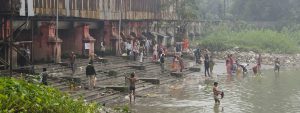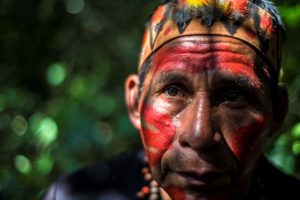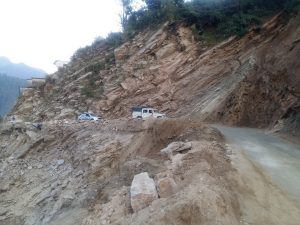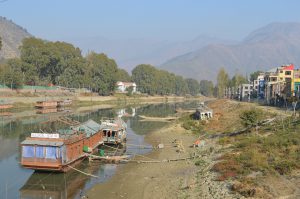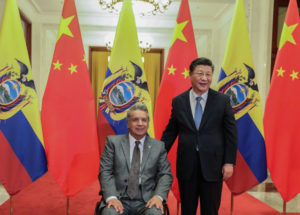Returning every night from the market, Abdul Aziz used to stumble in the darkness that enveloped the road for the entire 500 metres. Groping in the dark, careful of any missteps, he made his way home. But in the last three months, a few street lamps have appeared, transforming the path.
The is the story of Khowamuri, a village in Singair just 35 kilometres from Dhaka.
“Though we are living near the capital, our village is beyond the reach of the national [electricity] grid. Therefore, we are mostly dependent on kerosene after sunset. It was really tough for us to move anywhere after sunset,” Abdul Aziz told thethirdpole.net.
The recent change is due to off-grid solar power, and is a demonstration of the potential of renewable energy by one of the country’s leading NGOs, Grameen Shakti.
Like many villages in Bangladesh, Khowamuri is made up of 50 to 60 households. Of them, around 20 are enjoying the benefits of solar home systems provided by the NGO. Many others are waiting to get connected to the national grid, which is supposed to reach them soon. While Grameen Shakti has provided the solar lamps for free, other components of the solar systems are expensive, and the villagers are unsure whether to invest in them.

Mohammad Mahmodul Hasan, manager of Grameen Shakti, said that by providing the street lamps as part of their ‘eco-village development programme’, the organisation is showing what is possible and hopes that people will see the value of solar power.
Schoolchildren get water
While residents of Khowamuri can now see in the dark, the children of the nearby Uttar Bokchar government primary school are getting fresh water through solar pumps. Before, the 275 students in the school developed problems due to the high iron and arsenic concentration in the groundwater.
While most residents would use water from tubewells and ponds, and boil it before drinking, the school had no facilities to boil such large quantities of water, and so the children would have to carry it from home.
But a solar pump set up by Grameen Shakti allows the school to extract water from deeper below ground, providing clean water to drink. The pump can lift 2,000 litres of water in 40 minutes, and there is plenty of clean water for the students. Now, residents of nearby villages also come to the school to collect drinking water.
“Like the solar street lamps in Khowamuri, we have set up the solar pump in the school to demonstrate the solar-based opportunity among the common people,” said Hasan.
Renewable energy in Bangladesh
According to the Bangladesh Sustainable and Renewable Energy Development Authority (Sreda), the country has already installed more than 4.4 million solar home systems across the country, which produce around 180 megawatts of electricity. It has also installed almost 700 solar irrigation plants, producing around 6.62 megawatts, and 152 solar drinking systems producing another 1.55 megawatts.
Still, the share of renewable energy in Bangladesh is only 2.89% of the total installed capacity of around 16,000 megawatts. Bangladesh is set to expand its energy generation, primarily through coal-powered plants. Siddique Jobaer, a member of Sreda, said that the country plans to increase power generation to 24,000 megawatts by 2021 and 39,000 megawatts by 2030.
At the same time, the country has committed to generating 10% of its electricity from renewable energy. This will be a hard act to pull off given the low base from which the country is starting. Currently, the total electricity generated by renewable energy is 451.81 megawatts so to meet its target, Bangladesh will have to increase its renewable energy generation 86 times in 13 years.
This is a large and ambitious goal and although the government has large plans up until 2021, a key aspect to success will be whether citizens see the benefit of renewable energy and adopt it. This is what Grameen Shakti hopes to achieve through its initiatives.
![<p>A light in the darkness becomes a place of gathering at night [image by: Abu Siddique]</p>](https://dialogue.earth/content/uploads/2017/10/Local-villagers-are-talking-under-the-street-lamps-at-night.jpg)

